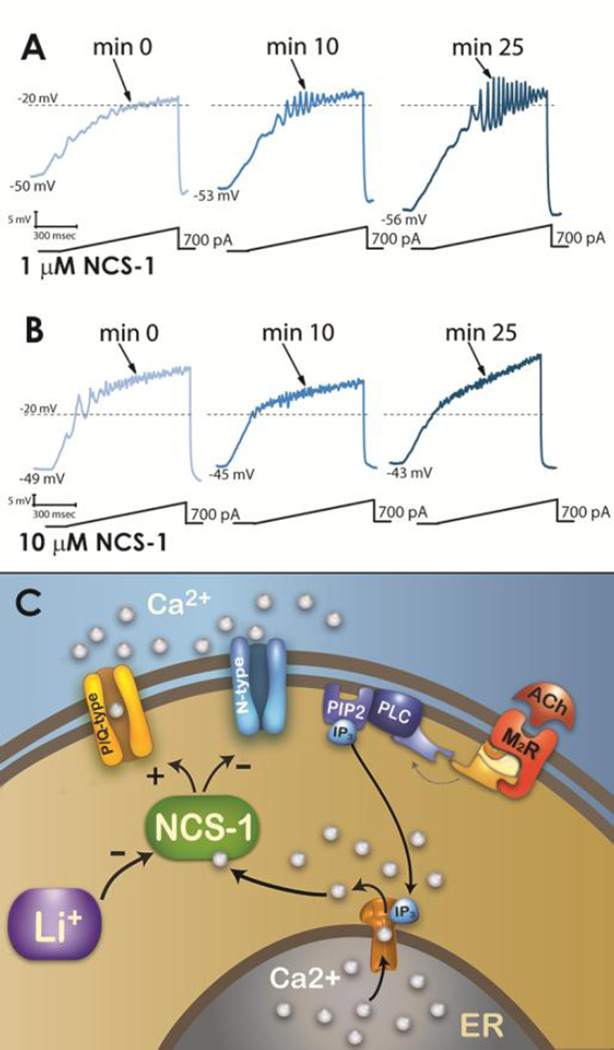Figure 4. Effects of NCS-1 on PPN neurons amplify oscillations at low concentrations (1 µM), block oscillations at high concentrations (10 µM), while lithium inhibits the effects of NCS-1 on oscillations.
A) Representative 1 sec long current ramp-induced oscillations in a PPN neuron in fast synaptic blockers and tetrodotoxin in the extracellular solution and 1 µM NCS-1 in the recording pipette (left record). After 10 min of NCS-1 diffusing into the cell, the oscillatory activity increased slightly (middle record). However, after 25 min of NCS-1 diffusion both oscillation amplitude and frequency were increased (right record). B) Representative ramp-induced oscillations recorded during 1 sec long current ramps in the presence of fast synaptic blockers and tetrodotoxin and NCS-1 at 10 µM in the recording pipette (left record). After 10 min of NCS-1 diffusing into the cell, the oscillation amplitude increased slightly (middle record). However, testing at 25 min showed a decrease in amplitude compared to both 0 min and 10 min recordings (right record). C) Representation of effects of ACh activation of a M2R acting through G protein coupling to PLC, that in turn cleaves PIP2 into IP3. IP3 is released and binds to IP3 receptors in the ER to release calcium (Ca2+). One of the intracellular pathways activated involves NCS-1, which stimulates P/Q-type calcium channels and somewhat inhibits N-type calcium channels. NCS-1 at low concentrations increases gamma oscillations while NCS-1 at high concentrations blocks them. In addition, NCS-1 over expression is inhibited by 1 mM lithium (Li+), removing the blockade of gamma oscillations and restoring the maintenance of gamma band activity in these cells. Data from D’Onofrio et al 2015a, 2015b.

